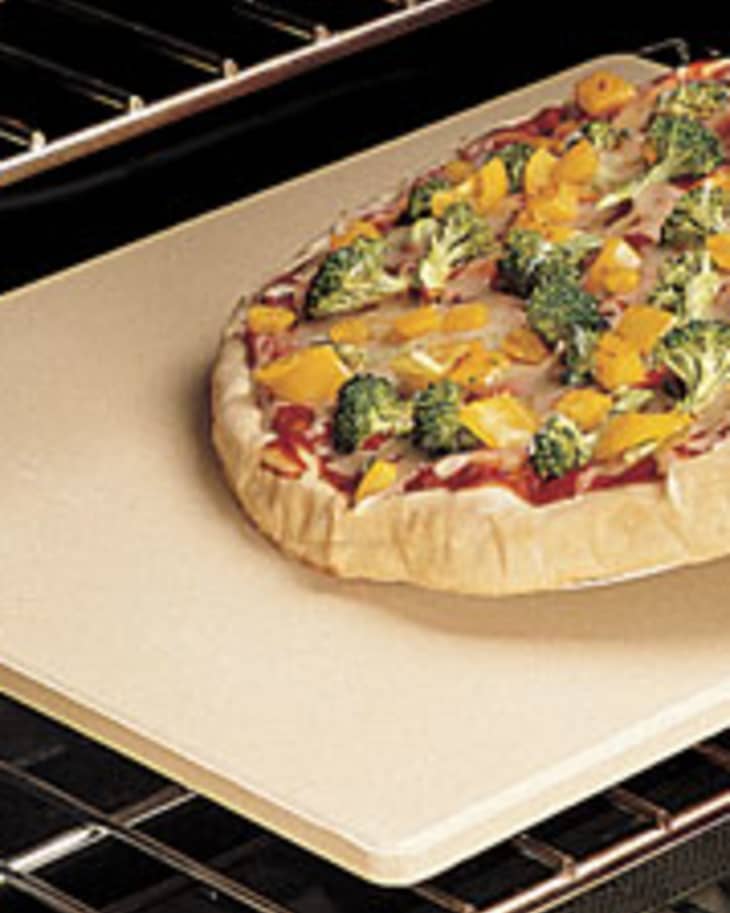Essential Kitchen Tools: A Baking Stone
Unless you’re lucky enough to have a brick hearth oven in your back yard, a baking stone–also called a pizza stone–is an essential tool for all of us would-be bakers!
These stones mimic the conditions in those brick ovens by absorbing heat from your oven and allowing you to bake loaves right on top of the heat source. This creates a direct transfer of heat and ensures that your loaves are cooked evenly.
The porous stone also pulls moisture from the dough and leaves your bread with a baker-approved crackling crust.
Most baking stones are made from a kind of fired-clay similar to brick and can withstand the high temperatures ideal for bread baking.
You can line your oven rack with unglazed quarry tiles or terracotta tiles from a hardware store. These are a bit thinner and are more prone to cracking, but they’re also inexpensive and readily available.
We leave our baking stone in the oven all the time and find that even sheets of cookies, casseroles, and braises benefit from the even heat. We also prefer a rectangular shaped stone instead of a circular one as it has a larger surface area and is nicer for when we’re baking shaped loaves like baguettes and batards.
Here are a few sources for baking stones and their kin:
- Pizza Baking Stone from King Arthur Flour, $49.95 (endorsed by Cook’s Illustrated)
- Sassafras Rectangular Superstone Baking Stone, $19.00 from Amazon.com
- Old Stone Oven Baking Stone, $39.95 from Amazon.com
- Fibrament Baking Stone, $50.00 from bakingstone.com
- Quarry Tiles, $0.97 each from Lowes.com
Do you use a baking stone in your oven?
(Photo Credit: King Arthur Flour)
